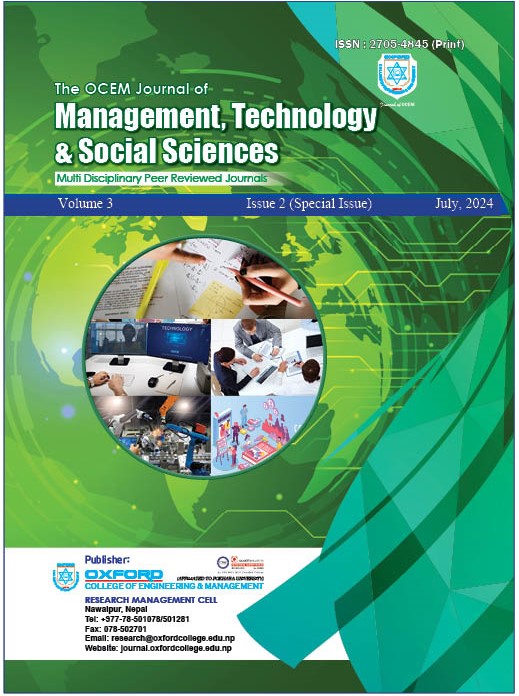Recycled Aggregate Concrete as a Structural Element
DOI:
https://doi.org/10.3126/ocemjmtss.v3i2.67861Keywords:
compressive strength, construction waste management, debris management, natural aggregate concrete, recycled aggregate concreteAbstract
The growing engrossment in production, resulting accumulation of demolition waste has led to an exigency for effective debris management and resource conservation. This research mainly aimed to compare the properties of recycled aggregate concrete (RAC) with natural aggregate concrete (NAC). A series of experiments like water absorption test, impact test and los- angeles abrasion test were done with 25%, 50%, 75% and 100% replacement of NA by RA. After, different concrete mixtures were made using different ratios of RA and NA and the compressive strength of each mixture was determined. The result shows that recycled coarse aggregate behaves similarly to natural aggregate. Although RA exhibited higher water absorption, the impact and abrasion values are considerable meeting the required standards for concrete pouring. Consequently, when RA replaces 25% NA in the concrete mix the compressive strength is interchangeable with that of 100% NA, propounding substitution is an approach for reducing debris and preserving natural aggregate. Furthermore, the results recommends that recycled aggregate can be used in other less important structures like pavement, retaining walls, river training works etc.as other ratios (50%, 75% and 100%) also gave the compressive strength near to M15.The main aim of this research is to promote sustainable construction practices, minimize waste materials, and mitigate the environmental impact of the construction industry. The broader implications of this study highlight the possibility of widespread adoption of recycled materials in the construction sector, encouraging innovation and resilience in building practices while addressing the global challenge of resource depletion and environmental degradation.
Downloads
Downloads
Published
How to Cite
Issue
Section
License
This license enables reusers to distribute, remix, adapt, and build upon the material in any medium or format for noncommercial purposes only, and only so long as attribution is given to the creator.




